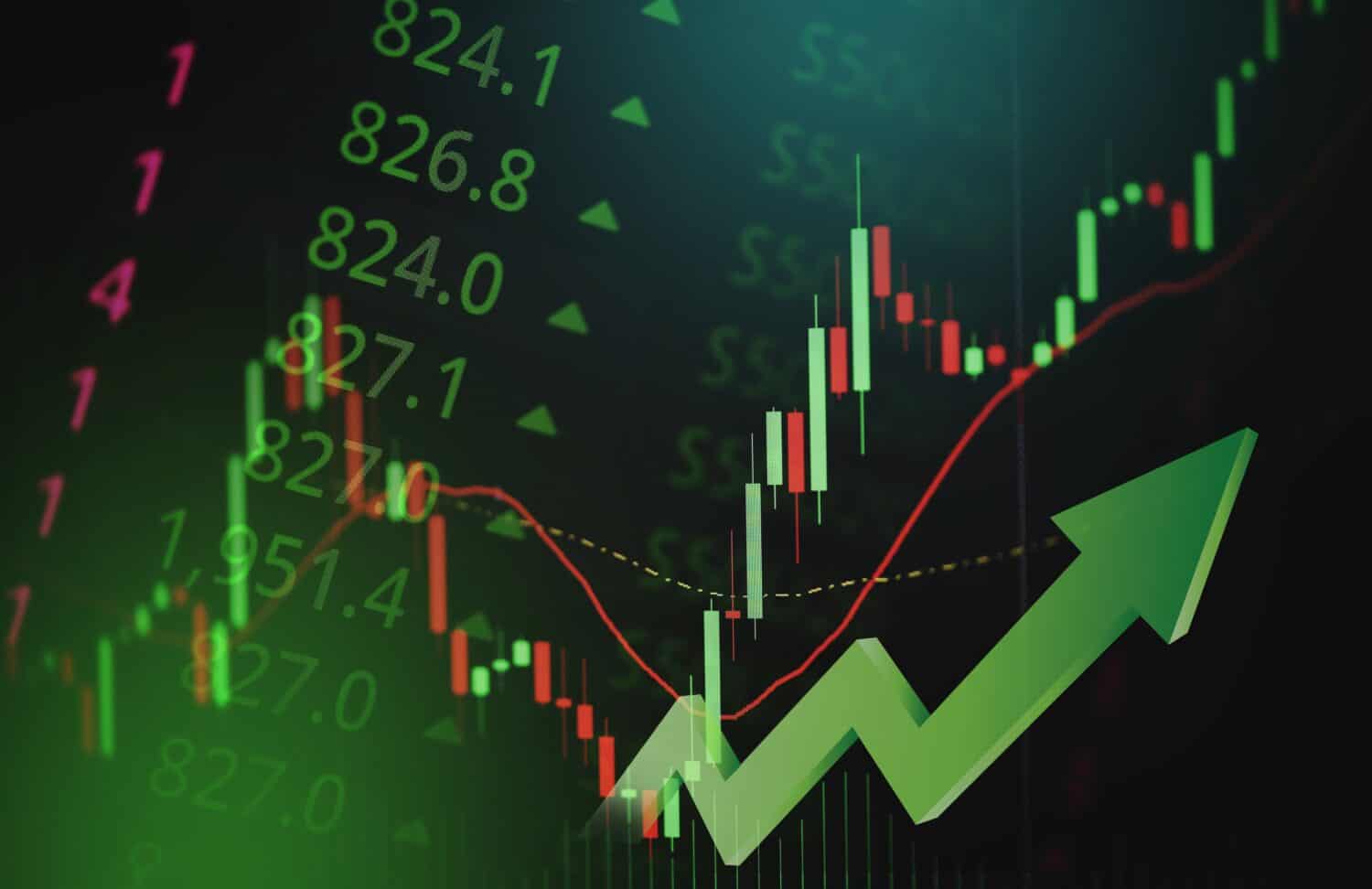

24/7 Wall Street Insights
- Exchange Traded Funds offer a stock market type platform to invest in various indexes.
- VTI is an ETF that tracks an overall stock market index from the Center for Research in Security Prices..
- JEPI is an example of an ETF for investing in the S&P 500 Total Return Index with an added twist..
- VUG is an ETF focused on top growth stocks from Vanguard’s own growth stocks index.
- For investors seeking dividends, click here for a free report on two high dividend stocks.
Since 2016, the Dow Jones Industrial Average has more than doubled, from 18,000 to over 39,000 at the time of this writing. This has caused consternation from many would-be investors on the sidelines over the thought that they missed the boat. At current levels, there is a sizable contingent of them who think the market is prime for another 2008 meltdown. Another group is more optimistic, but is unsure as to how much is left in the gas tank to go higher.
It is not presumptuous to guess that a great majority of investors would be overjoyed with more than doubling their money if they had invested in the DJIA index itself, Exchange Traded Funds (ETF) and Mutual Funds both provide the means to invest in an index of one’s choice out of the hundreds available. The best part is that one can, for the most part, invest much less initial principal in them than other investments would demand.
ETFs vs. Mutual Funds – McDonald’s or Burger King?

For close to 60 years, fast food aficionados have debated over their preference for McDonald’s vs. Burger King. Objectively, both chains serve variations on hamburgers, french fries, soft drinks, and assorted sides and desserts. Operationally, both establishments use comparable ordering systems and assembly line practices. The differences are minimal and largely preferential, as opposed to technically superior. ETFs vs. Mutual Funds are much the same.
Exchange Traded Funds and Mutual Funds have a number of likenesses. Here are the primary ones:
- Pools of individual stocks, bonds, derivatives contracts or other securities that represent the sector of interest comprise the portfolios of both ETFs and Mutual Funds.
- Diversification and risk mitigation properties through a prorated interest in the total portfolio’s assets is offered by both ETFs and Mutual Funds.
- Closed-end Mutual Funds both have a fixed number of shares and trade on NYSE or NASDAQ at a market bid/ask price, the same as ETFs..
Their differences are more distinct; the following apply to Open-Ended Mutual Funds::
- Most mutual funds have a minimum investment amount between $500 and $5,000. One can buy as little as a single ETF share.
- An ETF share can track an equivalent bond at a fraction of the bond’s $1,000 par value.
- ETFs trade at a live bid/ask market price, which can vary within seconds.Mutual Funds trade at the same Net Asset Value price for the entire day.
- Since they are frequently pegged to a benchmark index, most ETFs are passively managed. Mutual Funds are usually actively managed, which correspondingly hikes load fees.
- Mutual Funds have varying loads, and early redemption fees, which are factored into their costs. Lower ETF costs can be a premium to NAV, broker commissions, and market maker bid/ask spreads.
- Mutual Funds are taxed differently (usually higher) than ETFs with regard to capital gains.
Vanguard Total Stock Market ETF

ETF: Vanguard Total Stock Market ETF (NYSE: VTI)
Yield: 1.36%
Shares for $1,000: 3.75
Fees: 0,02% expense ratio
With $407.5 billion AUM, the Vanguard Total Stock Market ETF is designed to track and replicate the CRSP US Total Market Index. This index includes nearly 4,000 different companies including mega, large, mid, small, and microcap stocks. Nearly 100% of the US equities market is represented.
Sector wise, the Vanguard Total Stock Market ETF portfolio’s top 5 contains:
- Technology: 33.08%
- Financials: 15.23%
- Consumer Svc. : 11.91%
- Industrials: 11.01%
- Health Care: 10.62%
The 10 largest positions in the Vanguard Total Stock Market ETF portfolio are:
- Microsoft (NASDAQ: MSFT): 6.06%
- Apple Inc. (NASDAQ: AAPL): 5.55%
- Nvidia Corp. (NASDAQ: NVDA): 5.12%
- Amazon.com (NASDAQ: AMZN): 3.24%
- Meta Platforms Inc. (NASDAQ: META): 2.02%
- Alphabet Inc. Class A (NASDAQ: GOOGL): 2.00%
- Alphabet Inc. Class C (NASDAQ: GOOG): 1.65%
- Berkshire Hathaway – B (NYSE: BRK.B): 1.45%
- Eli Lilly & Co. (NYSE: LLY): 1.38%
- Broadcom, Inc.. (NASDAQ: AVGO): 1.22%
10 years ago, the Vanguard Total Stock Market ETF was $101.37. As of the time of this writing, it was $267.92, over a 150% gain.
JP Morgan Equity Premium Income ETF

ETF: JP Morgan Equity Premium Income ETF (NYSE: JEPI)
Yield: 7.34%
Shares for $1,000: 17.82
Fees: 0.35%
One of the specialties of 24/7 Wall Street is its extensive database of dividend stocks. It has published a voluminous number of articles highlighting different dividend stocks over the past decade. Income oriented fund investors will want to take a closer look at income focused ETFs, which often use strategies to enhance returns that are unavailable to bond ETFs or other funds.
The JP Morgan Equity Premium Income ETF is a fund that cherry picks solidly reliable dividend paying stocks from the S&P 500 Index. Attention is paid to those stocks that aren’t overly volatile. It then uses 20% of its funds to sell out of the money call options against the stocks. The strategy is predicated on the stocks’ slow volatilities, with the majority of the options expiring worthless. Thus, extra income is derived from the portfolio stocks beyond their intrinsic appreciation over time. The premiums earned from selling the options mathematically reduce the cost basis of each stock accordingly.
The top 10 largest holdings in the JP Morgan Equity Premium Income ETF are:
- Microsoft (NASDAQ: MSFT): 1.70%
- Amazon.com (NASDAQ: AMZN): 1.68%
- Trane Technologies PLC (NYSE: TT) 1.63%
- The Progressive Corp. (NYSE: PGR) 1.62%
- Meta Platforms Inc. (NASDAQ: META): 1.62%
- Intuit Inc. (NASDAQ: INTU) 1.55%
- Alphabet Inc. Class A (NASDAQ: GOOGL): 1.54%
- Mastercard Inc. (NYSE: MA) 1.46%
- Southern Co. (NYSE: SO) 1.46%
- Abbvie Inc. (NYSE: ABBV) 1.44%
JP Morgan Equity Premium Income ETF has $33.9 billion AUM invested across 133 different total stocks. The 2023 total return (capital gains and dividend yields) totalled nearly 15%.
Vanguard Growth Index Fund ETF Shares

ETF: Vanguard Growth Index Fund ETF Shares (NYSE: VUG)
Yield: 0.52%
Shares for $1,000:2.65
Fees: 0.04%
If capital appreciation is the goal of a fund investor, the Vanguard Growth Index Fund ETF Shares is worth a look. Tracking the CRSP US Large Cap Growth Index, Vanguard Growth Index Fund ETF Shares contains the Magnificent 7 tech stocks that have been driving the Dow Jones Industrial Average and S&P 500 to record levels.
The fund has averaged a return of 14.89% per year over the past decade, which means a roughly 300% appreciation in total. Vanguard Growth Index Fund ETF Shares has $137 billion AUM and its top 10 largest portfolio positions are:
- Microsoft (NASDAQ: MSFT): 12.61%
- Apple Inc. (NASDAQ: AAPL): 11.52%
- Nvidia Corp. (NASDAQ: NVDA): 10.62%
- Amazon.com (NASDAQ: AMZN): 6.72%
- Meta Platforms Inc. (NASDAQ: META): 4.22%
- Alphabet Inc. Class A (NASDAQ: GOOGL): 4.14%
- Alphabet Inc. Class C (NASDAQ: GOOG): 3.41%
- Eli Lilly & Co. (NYSE: LLY): 2.88%
- Tesla, Inc.. (NASDAQ: TSLA) 1.98%
- Visa Inc. (NYSE: V) 1.72%
The Magnificent 7 includes Microsoft, Apple, Nvidia, Amazon, Meta Platforms, Alphabet, and Tesla. As one can see by the breakdown of shares, the Magnificent 7 comprises around half of the portfolio’s total assets.
ETFs come in a wide assortment of index coverages, strategies, and sectors. While not requiring as much regular scrutiny as an individual stock portfolio, they should still be monitored for any news or market events that impact the overall market and may affect the ETFs that are chosen.
ALERT: Take This Retirement Quiz Now (Sponsored)
Take the quiz below to get matched with a financial advisor today.
Each advisor has been vetted by SmartAsset and is held to a fiduciary standard to act in your best interests.
Here’s how it works:
1. Answer SmartAsset advisor match quiz
2. Review your pre-screened matches at your leisure. Check out the advisors’ profiles.
3. Speak with advisors at no cost to you. Have an introductory call on the phone or introduction in person and choose whom to work with in the future
Take the retirement quiz right here.
Thank you for reading! Have some feedback for us?
Contact the 24/7 Wall St. editorial team.



